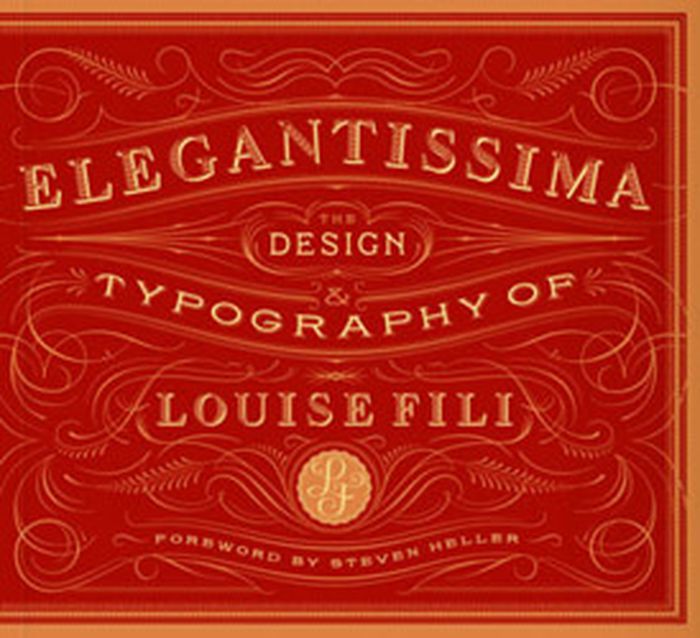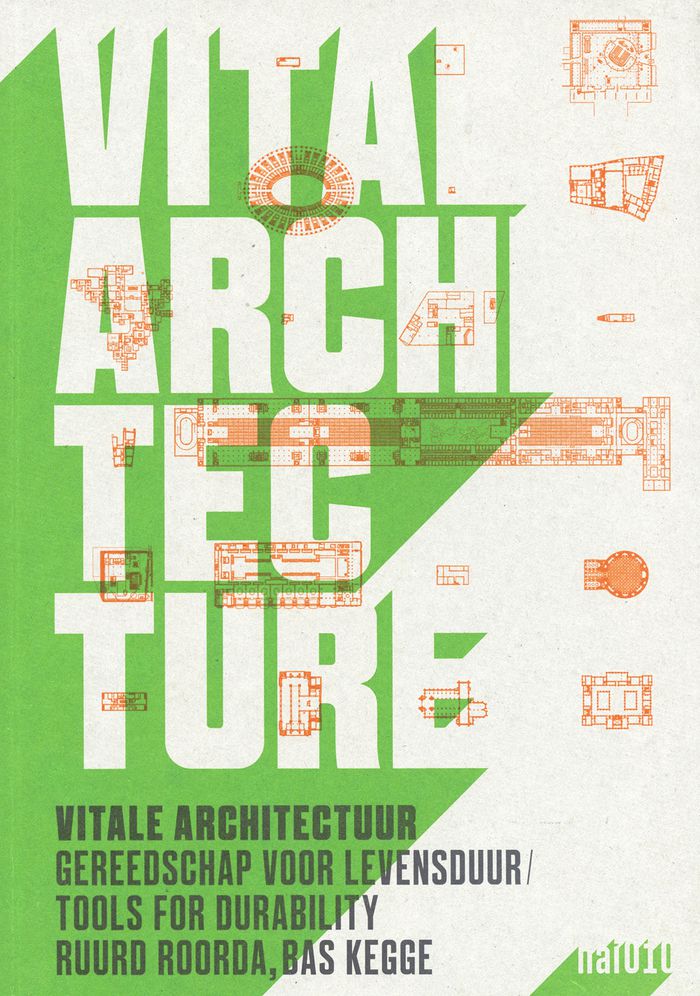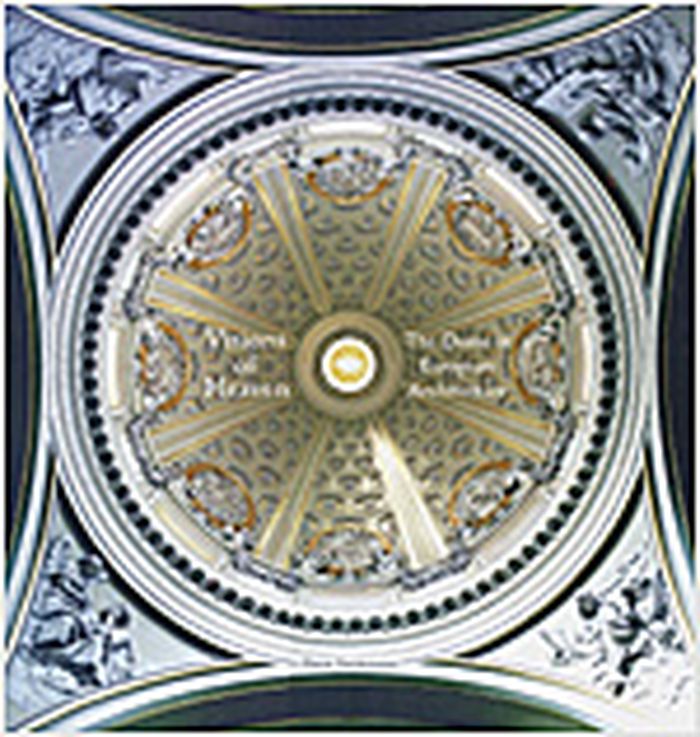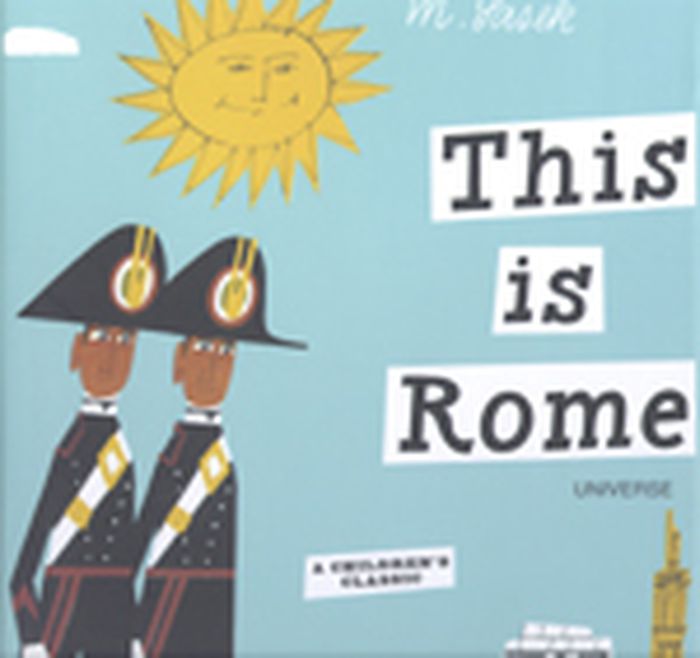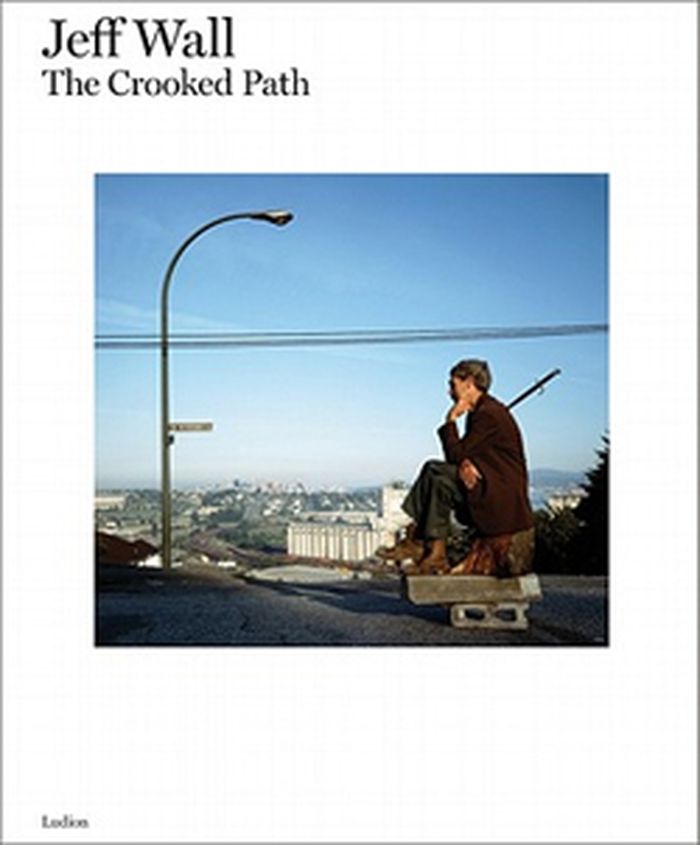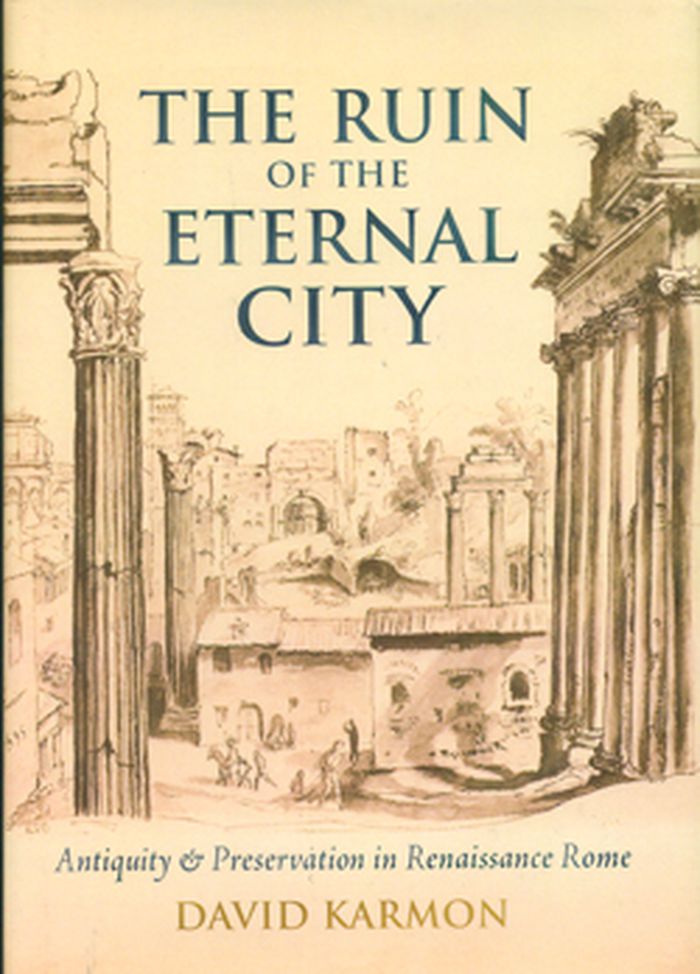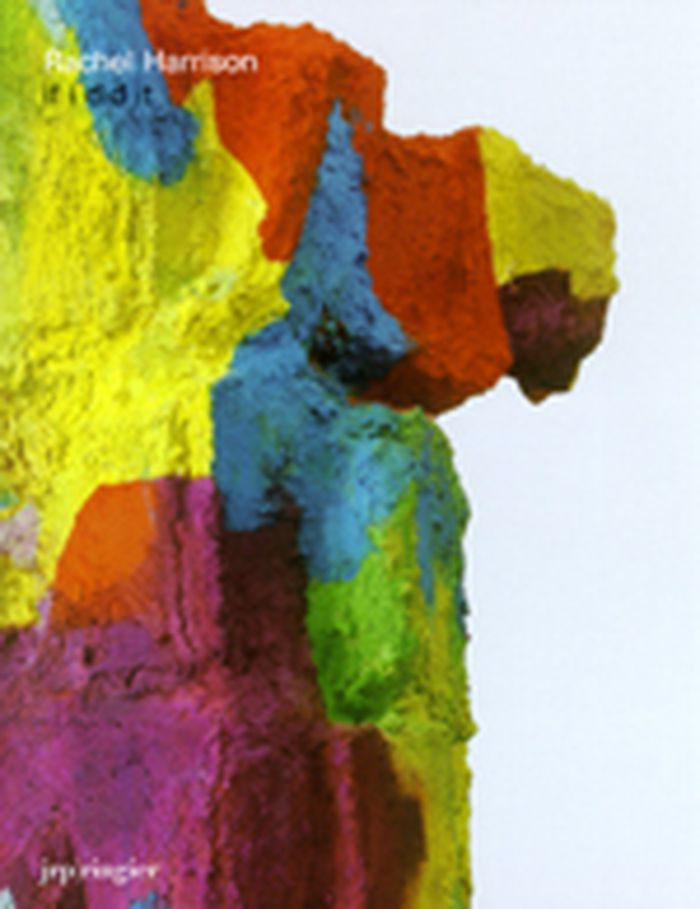$45.00
(disponible sur commande)
Résumé:
Louise Fili has been an inspiration for designers around the world since the 1980s, when she raised the bar on book cover design, creating close to two thousand jackets as art director for Pantheon Books. In 1989 Fili founded her own graphic design studio, Louise Fili Ltd, and branched out into the fields of restaurant and food packaging design. Her lavish and elegant(...)
Elegantissima : the design & typography of Louise Fili
Actions:
Prix:
$45.00
(disponible sur commande)
Résumé:
Louise Fili has been an inspiration for designers around the world since the 1980s, when she raised the bar on book cover design, creating close to two thousand jackets as art director for Pantheon Books. In 1989 Fili founded her own graphic design studio, Louise Fili Ltd, and branched out into the fields of restaurant and food packaging design. Her lavish and elegant typography, often hand drawn, helps advertise and market such well-known brands as Sarabeth's, Bella Cucina, Jean-Georges, and Good Housekeeping, among many others. Known for her intense attention to detail, her fresh reinterpretation of vintage sources, and her passion for all things Italian, Fili has won numerous awards. Elegantissima, the first monograph on her work, covers the breadth of her nearly forty-year design career.
$52.50
(disponible sur commande)
Résumé:
From the Pantheon in Rome to the Zollverein in Essen, “vital architecture” describes buildings with a future value, buildings whose architecture determines and guarantees their lifespan. The spatial quality of such buildings is the core of their value and sustainability, even--or especially--when their use changes. Vital Architecture focuses on the clients, users,(...)
Vital architecture: tools for durability
Actions:
Prix:
$52.50
(disponible sur commande)
Résumé:
From the Pantheon in Rome to the Zollverein in Essen, “vital architecture” describes buildings with a future value, buildings whose architecture determines and guarantees their lifespan. The spatial quality of such buildings is the core of their value and sustainability, even--or especially--when their use changes. Vital Architecture focuses on the clients, users, architects and designers of such buildings. Written by Ruurd Roorda and Bas Kegge, the book documents and interprets 20 of these vital buildings with plans, sections, diagrams and photographs by Roel Backaert. Offering a spatial analysis of both instantly recognizable architectural icons and common, everyday existing buildings drawn from a period ranging from the beginning of the Christian era to the present, Vital Architecture develops a methodology to account for the lifespan of buildings, and offers inspiration for creating something for the future.
Théorie de l’architecture
$80.00
(disponible sur commande)
Résumé:
There's an ethereal magic to standing beneath a dome, neck craned, looking up at a vision of the heavens created by some long-ago figure of genius. From the Pantheon to the Hagia Sophia, the power of the dome seems transcen-dent. Photographer David Stephenson's magnificently kaleidoscopic images of dome interiors capture this evanescent drama, and make Visions of Heaven(...)
Visions of heaven : the dome in European architecture
Actions:
Prix:
$80.00
(disponible sur commande)
Résumé:
There's an ethereal magic to standing beneath a dome, neck craned, looking up at a vision of the heavens created by some long-ago figure of genius. From the Pantheon to the Hagia Sophia, the power of the dome seems transcen-dent. Photographer David Stephenson's magnificently kaleidoscopic images of dome interiors capture this evanescent drama, and make Visions of Heaven one of the most spectacularly beautiful books we've ever produced. Traveling from Italy to Spain, Turkey, England, Germany, and Russia, among other countries, and photographing churches, palaces, mosques, and synagogues from the second to the early twentieth century, Stephenson's work amounts to a veritable typology of the cupola. His images present complex geometrical structures, rich stucco decorations, and elaborate paintings as they have never been seen before. Brilliantly calibrated exposures reveal details and colors that would otherwise remain hidden in these dimly lit spaces.
Histoire jusqu’à 1900
$26.95
(disponible sur commande)
Résumé:
Under the shadow of gray clouds, three children venture into the woods, where they spot the corpse of an old man on a scaffold. Suddenly a wild figure emerges, with long fingernails and tangled hair. It is the Hattak fullih nipi foni, the bone picker, who comes to tear off rotting flesh with his fingernails. Only the Choctaws who adhere to the old ways will speak of him.(...)
The bone picker: Native stories, alternate histories
Actions:
Prix:
$26.95
(disponible sur commande)
Résumé:
Under the shadow of gray clouds, three children venture into the woods, where they spot the corpse of an old man on a scaffold. Suddenly a wild figure emerges, with long fingernails and tangled hair. It is the Hattak fullih nipi foni, the bone picker, who comes to tear off rotting flesh with his fingernails. Only the Choctaws who adhere to the old ways will speak of him. The frightening bone picker is just one of many entities, scary and mysterious, who lurk behind every page of this spine-tingling collection of Native fiction, written by award-winning Choctaw author Devon A. Mihesuah. Choctaw lore features a large pantheon of deities. These beings created the first people, taught them how to hunt, and warned them of impending danger. Their stories are not meant simply to entertain: each entity has a purpose in its behavior and a lesson to share-to those who take heed.
Littérature et poésie
This is Rome
$22.00
(disponible sur commande)
Résumé:
Like the other Sasek classics, this is a facsimile edition of the original book. The brilliant, vibrant illustrations have been meticulously preserved, remaining true to his vision more than 40 years later. Facts have been updated for the 21st-century, appearing on a "This is . . . Today" page at the back of the book. These charming illustrations, coupled with Sasek's(...)
This is Rome
Actions:
Prix:
$22.00
(disponible sur commande)
Résumé:
Like the other Sasek classics, this is a facsimile edition of the original book. The brilliant, vibrant illustrations have been meticulously preserved, remaining true to his vision more than 40 years later. Facts have been updated for the 21st-century, appearing on a "This is . . . Today" page at the back of the book. These charming illustrations, coupled with Sasek's witty, playful narrative, make for a perfect souvenir that will delight both children and their parents, many of whom will remember the series from their own childhoods. This is Rome, first published in 1960, traces the history of Roman civilization to bring to life the Rome of the 60's. Sasek navigates Rome's busy, winding streets to visit such glorious historical landmarks as the statues of Michelangelo, Vatican City, the Pantheon, and the Fontana di Trevi-and to show us the eccentricities of modern Roman life, from its colorful trains, trams, and taxis to its chic espresso bars and pasta houses.
Littérature jeunesse
livres
After the city
$20.00
(disponible sur commande)
Résumé:
The city's reign over our senses, our moods, our very ways of being is outmoded. The suburban metropolis has superseded the city. The new building materials are non-material: electricity, telephony, weather, time, and so forth. Consequently, according to Lars Lerup, architecture and architects must be rethought. Until now, architects have been trained to serve the(...)
After the city
Actions:
Prix:
$20.00
(disponible sur commande)
Résumé:
The city's reign over our senses, our moods, our very ways of being is outmoded. The suburban metropolis has superseded the city. The new building materials are non-material: electricity, telephony, weather, time, and so forth. Consequently, according to Lars Lerup, architecture and architects must be rethought. Until now, architects have been trained to serve the elite few, as reflected in a belief in customization and the uniqueness of each project. Instead, Lerup holds, architectural educators should promote teamwork and the design of authorless objects, combined with an integration of design and practice. Before we can rethink the architectural curriculum, however, we must rethink the metropolis. And rethink the metropolis is just what Lerup does. In an intellectually far-ranging yet intensely personal manner, he moves from contemplation of the form and philosophical implications of the Pantheon to a discussion of how Levittown residents seek and create community. The result is an exhilarating work with profound practical implications. Unlike the many who view suburbia with paranoid dismay, Lerup takes an optimistic view of the new, open metropolis--for him not the site of unavoidable uniformity and mediocrity, but an exciting new frontier.
livres
octobre 2001, Cambridge, Mass.
Théorie de l’urbanisme
livres
After the city
$63.50
(disponible sur commande)
Résumé:
The city's reign over our senses, our moods, our very ways of being is outmoded. The suburban metropolis has superseded the city. The new building materials are non-material: electricity, telephony, weather, time, and so forth. Consequently, according to Lars Lerup, architecture and architects must be rethought. Until now, architects have been trained to serve the(...)
After the city
Actions:
Prix:
$63.50
(disponible sur commande)
Résumé:
The city's reign over our senses, our moods, our very ways of being is outmoded. The suburban metropolis has superseded the city. The new building materials are non-material: electricity, telephony, weather, time, and so forth. Consequently, according to Lars Lerup, architecture and architects must be rethought. Until now, architects have been trained to serve the elite few, as reflected in a belief in customization and the uniqueness of each project. Instead, Lerup holds, architectural educators should promote teamwork and the design of authorless objects, combined with an integration of design and practice. Before we can rethink the architectural curriculum, however, we must rethink the metropolis. And rethink the metropolis is just what Lerup does. In an intellectually far-ranging yet intensely personal manner, he moves from contemplation of the form and philosophical implications of the Pantheon to a discussion of how Levittown residents seek and create community. The result is an exhilarating work with profound practical implications. Unlike the many who view suburbia with paranoid dismay, Lerup takes an optimistic view of the new, open metropolis--for him not the site of unavoidable uniformity and mediocrity, but an exciting new frontier.
livres
mai 2000, Cambridge, Mass.
Théorie de l’urbanisme
Jeff Wall: the crooked path
$55.00
(disponible sur commande)
Résumé:
The photography of Jeff Wall (born 1946) is consciously and profoundly saturated in the social: in the Vancouver art community from which he first emerged, fully formed, in the late 1970s; in the racial and gender politics of our times, which he analyses with marvelous clarity in his huge photographic light boxes that declare an equal status with painting through their(...)
Jeff Wall: the crooked path
Actions:
Prix:
$55.00
(disponible sur commande)
Résumé:
The photography of Jeff Wall (born 1946) is consciously and profoundly saturated in the social: in the Vancouver art community from which he first emerged, fully formed, in the late 1970s; in the racial and gender politics of our times, which he analyses with marvelous clarity in his huge photographic light boxes that declare an equal status with painting through their scale and their carefully plotted depth and grandeur; in the art history pantheon that informs his staged compositions, from Hokusai to Velásquez and Manet; and in his influence on at least two generations of photographers, most notably the Düsseldorf school (Andreas Gursky once cited Wall as “a great model for me” ). This publication examines the cultural context for Wall's tremendous achievement in photography. Wall himself has chosen 25 of his own photographs, taken between the late 1970s and the present, and has constellated them among the visionary company his work keeps, alongside reproductions of works by Marcel Duchamp, Diane Arbus, Eugene Atget, Wols, Andreas Gursky, David Claerbout, Thomas Struth, Frank Stella, Robert Smithson, Rodney Graham, Ian Wallace, Lawrence Wiener and R.W. Fassbinder. This book orients Wall's photography across ten themed chapters, each of which is prefaced with an interview with Wall by Hans De Wolf. Also included are testimonies and essays by fellow artists and art historians, such as Luc Tuymans, Lawrence Weiner, Michael Fried and David Campany.
Monographies photo
$71.50
(disponible sur commande)
Résumé:
In Renaissance Rome, ancient ruins were preserved as often as they were mined for their materials. Although the question of what to preserve and how continued to be subject to debate, preservation acquired renewed force and urgency in the fifteenth and sixteenth centuries as the new papal capital rose upon the ruins of the ancient city. Preservation practices became more(...)
The ruin of the eternal city : Antiquity & preservation in renaissance Rome
Actions:
Prix:
$71.50
(disponible sur commande)
Résumé:
In Renaissance Rome, ancient ruins were preserved as often as they were mined for their materials. Although the question of what to preserve and how continued to be subject to debate, preservation acquired renewed force and urgency in the fifteenth and sixteenth centuries as the new papal capital rose upon the ruins of the ancient city. Preservation practices became more focused and effective in Renaissance Rome than ever before. "The Ruin of the Eternal City" offers a new interpretation of the ongoing life of ancient buildings within the expanding early modern city. While historians and archaeologists have long affirmed that early modern builders disregarded the protection of antiquity, this study provides the first systematic analysis of preservation problems as perceived by the Renaissance popes, the civic magistrates, and ordinary citizens. Based on new evidence and recent conservation theory, this compelling study explores how civic officials balanced the defense of specific sites against the pressing demands imposed by population growth, circulation, and notions of urban decorum. Above all, the preservation of antiquity remained an indispensable tool to advance competing political agendas in the papal capital. A broad range of preservation policies and practices are examined at the half-ruined Colosseum, the intact Pantheon, and the little-known but essential Renaissance bridge known as the Ponte Santa Maria.
Rachel Harrison If I did it
$56.00
(disponible sur commande)
Résumé:
Gracing the cover jacket of Rachel Harrison's highly anticipated second monograph is an informal monument to the man who holds the Americas' namesake. The only hint to this memorial for the 15th century Italian explorer, Amerigo Vespucci, is an apple resting on an outcropping of neon-green cement; of course the fact that the apple is not only artificial but has a bite(...)
mars 2008, Zurich
Rachel Harrison If I did it
Actions:
Prix:
$56.00
(disponible sur commande)
Résumé:
Gracing the cover jacket of Rachel Harrison's highly anticipated second monograph is an informal monument to the man who holds the Americas' namesake. The only hint to this memorial for the 15th century Italian explorer, Amerigo Vespucci, is an apple resting on an outcropping of neon-green cement; of course the fact that the apple is not only artificial but has a bite taken out of it suggests otherwise to the discovery of these "Edenic" continents. This slight yet important fact raises the basic concept of if i did it: the active disavowal of art's political function as a museological testament to the "progress" of social history. By tossing off this monumental propensity, Harrison builds "antimonuments;" not so much sculptures but lumpen aggregates of pop psychology. In addition to Vespucci, throughout the book, one finds that celebrities Johnny Depp and Tiger Woods are included in a pantheon with John Locke and 18th century Corsican revolutionary Pasquale Paoli, meanwhile Al Gore checks the temperature, Claude Levi-Strauss checks the door with a taxidermied hen and rooster and a bi-curious Alexander the Great is the master of ceremonies. The title, taken from O.J. Simpson's infamous "hypothetical" account of his murder of Nicole Brown Simpson and Donald Goldman, groups this role call of high- and low- brow idols into a nonhierarchical tableau where cultural and political value are allotted only where one sees fit.
